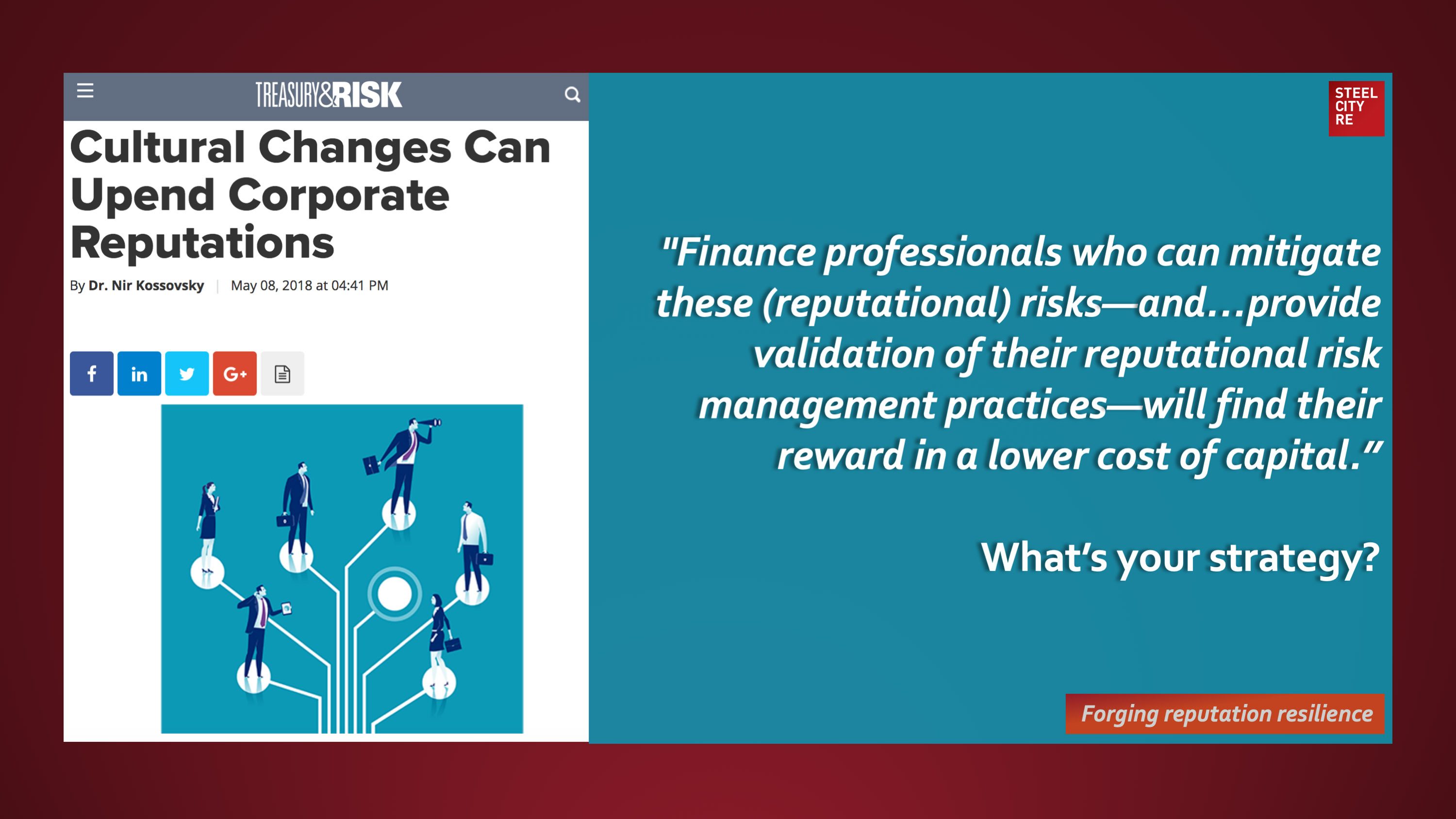What all these events have in common is that they are altering, suddenly and profoundly, the risk environment for businesses. As they have done for years, companies need to be constantly challenging their own assumptions about future events and stakeholder expectations—protecting themselves against every “what if” they can imagine. But today, they need to do so more often. Failing to correctly gauge stakeholder expectations can lead to existential economic risks. Companies need to understand the nuances of reputation risk and how to measure, manage, and insure it.
We seem to be at a similar inflection point now with respect to data privacy and security. For years, our society seemed to understand that we were surrendering a vast amount of personal information in return for a more customized user experience on various sites, including Facebook, and we were willing to accept the risks. Indeed, in many cases, consumers reflexively agreed to “privacy” policies that allowed companies to collect and use their personal information. Today, as more information comes to light about Cambridge Analytica, Facebook, and others, the public’s expectations appear to be changing.
Another realm in which culture risk is evolving rapidly is weapon sales. For years, our society understood that guns posed a threat, that at any time a deranged individual might wreak havoc with a product acquired legally, and that the retailer which sold the weapon could face tangible economic impacts. For years, national retailers accepted that risk—until the reaction to the Parkland, Florida, school shooting caused several retail chains to change their policies.
Consider how dramatically recent changes in attitudes and perceptions of certain practices and events are affecting corporate America. In some workplaces, sexual harassment and abuse existed for years. The corporate world overall expressed regret about such behavior, recognized it as counter to organizational values, and dealt with it in ways that varied from company to company and case by case. But suddenly, in the wake of scandals starring Harvey Weinstein, Steve Wynn, and so many others, the #metoo movement has made this issue into a bright red line. Companies or individuals who cross it may have their reputations, and perhaps their future business prospects, destroyed.
May 8, 2018
Treasury & Risk
“Finance professionals who can mitigate these (reputational) risks—and…provide validation of their reputational risk management practices—will find their reward in a lower cost of capital.”
Reputation insurance: indemnification affirming trust and reducing economic losses.
Reputations are valuable strategic intangible assets. Threats to these assets⏤ enterprise reputation risks, often mislabeled “brand risks” ⏤ need to be managed, and management needs to be overseen through reputation risk governance lest reputational damage or reputational harm result in long-tailed go-forward losses in economic value and/or political power. Because these intangible risks arise from the interplay of stakeholder expectation, experiences, and media amplification, parametric insurances for intangible asset risks, for reputational value, for reputational harm, and for reputation assurance help mitigate risk by telling a simple, convincing and completely credible story of quality reputation governance to stakeholders. This story telling effect is the expressive power of insurance complementing insurance’s better known instrumental power of indemnification.
Reputation value is a strategic power companies use to sell more, faster, and at premium prices; and to obtain labor, vendor services, as well as capital on preferred terms.
Steel City Re mitigates the hazards of ESG (reputation) risk that threaten reputation value. We use parametric reputation insurances, ESG insurances, and risk management advisory services to make our clients reputationally resilient.
Risk management, risk financing in insurance captives, and risk transfer through reputation insurances comprise the constituent elements of a comprehensive Steel City Re reputation risk governance and management solution.
Click on the highlighted text for a broader view of reputation risk case studies and reputation premium; or to explore additional articles by Steel City Re here, mentions of Steel City Re here, and comments on newsworthy topics by Steel City Re here.
Learn about our services here.
Context and Background
Risk managers are now central to the process for managing risks to reputation and that’s a process marketers and communications professionals need to be a part of. The oversight of reputation risk management is mission-critical.
Courts have increasingly been ruling that reputation is a mission critical function and oversight of its management is a responsibility of the board of directors. Courts are also ruling that marketing statements companies make – if they related to issues that affect their reputation, like ESG – may be considered material by investors. Litigation along these lines has yielded large settlements or verdicts for plaintiffs.
And now, the SEC has proposed new rules requiring disclosures by public companies related to their ESG activities; those statements could become a communications and reputational minefield.
As a result, reputation risk management is evolving into an intelligence gathering operation spanning the entire enterprise, roping in the enterprise risk manager, compliance counsel, and increasingly, reporting up to the Chief Legal Officer. There is a growing recognition that reputation is not a product merely of marketing and media coverage, but of the degree to which stakeholders’ expectations are aligned with actual performance. The reputation risk management process requires a thorough and ongoing analysis of stakeholder expectations, the risks of disappointment, and a plan for either managing those expectations or assessing and insuring against the cost of failure.
One Last Question
Are ESG insurance or reputation insurance part of your strategy?

